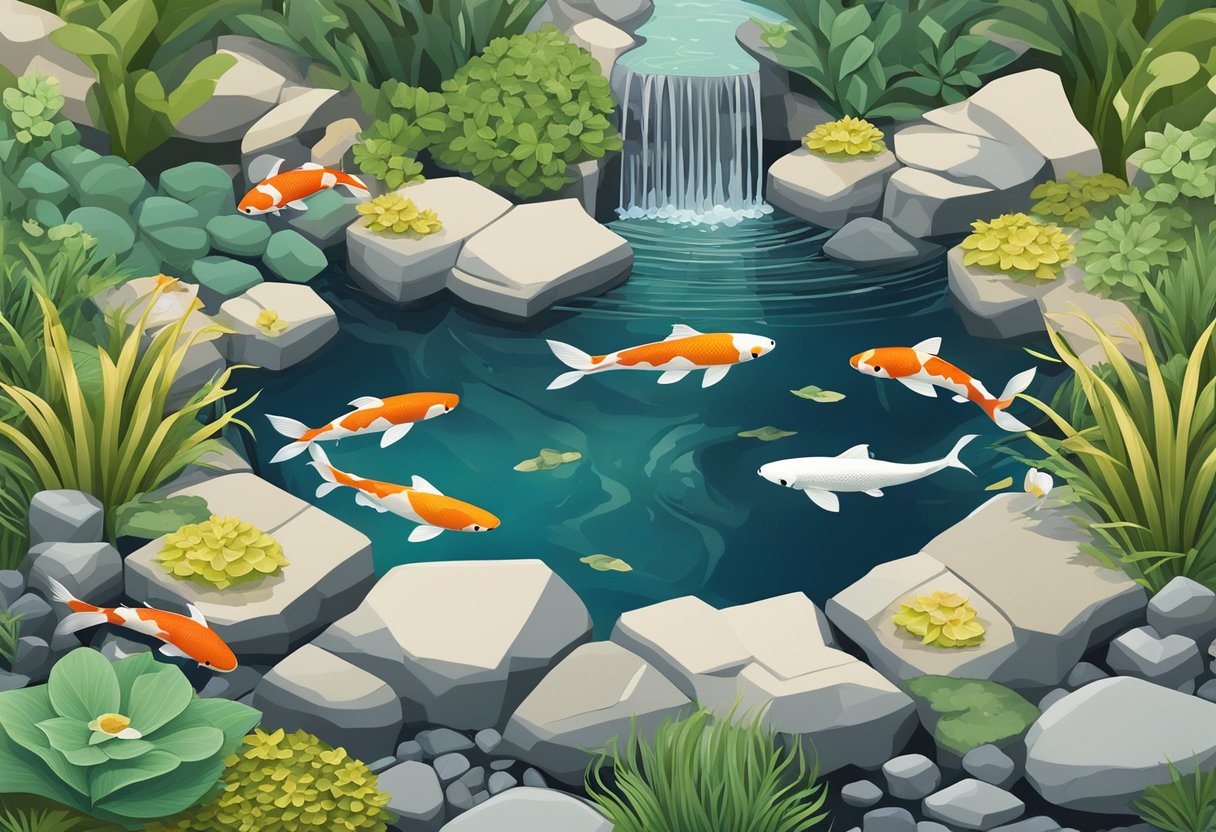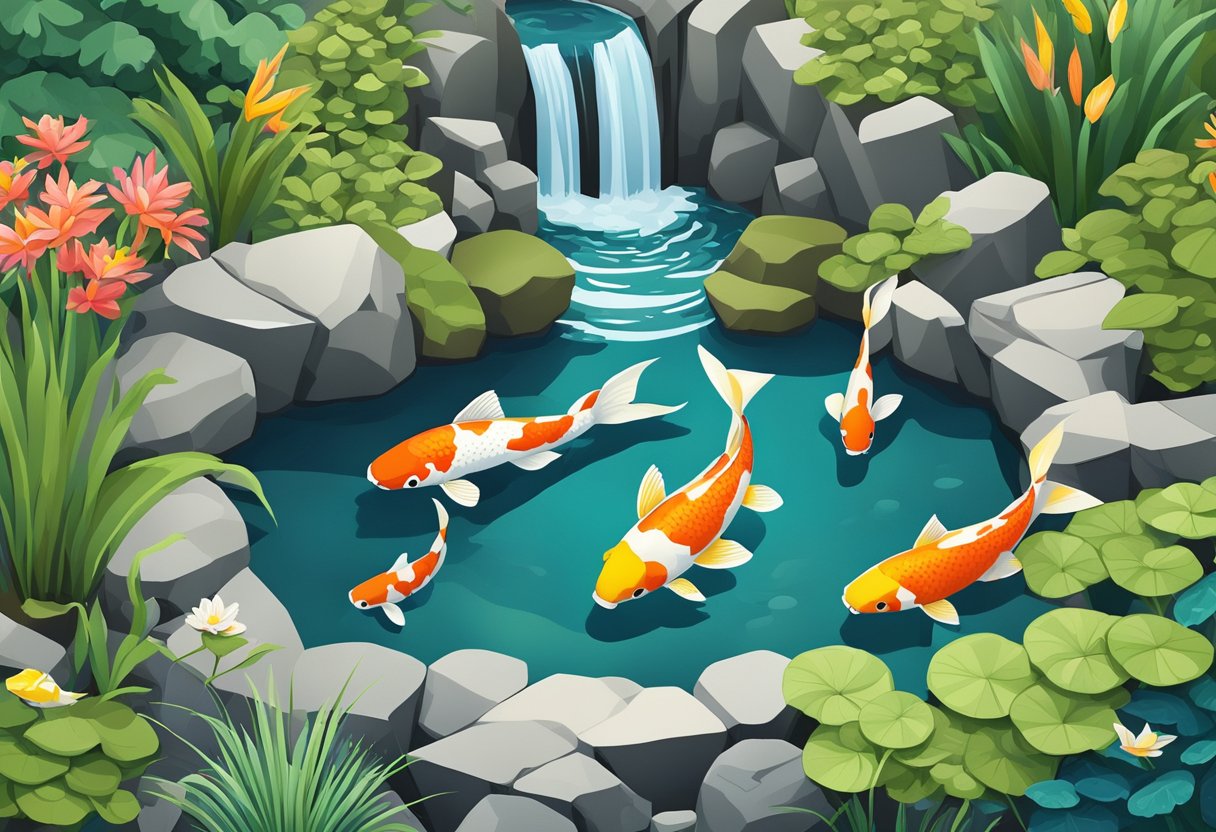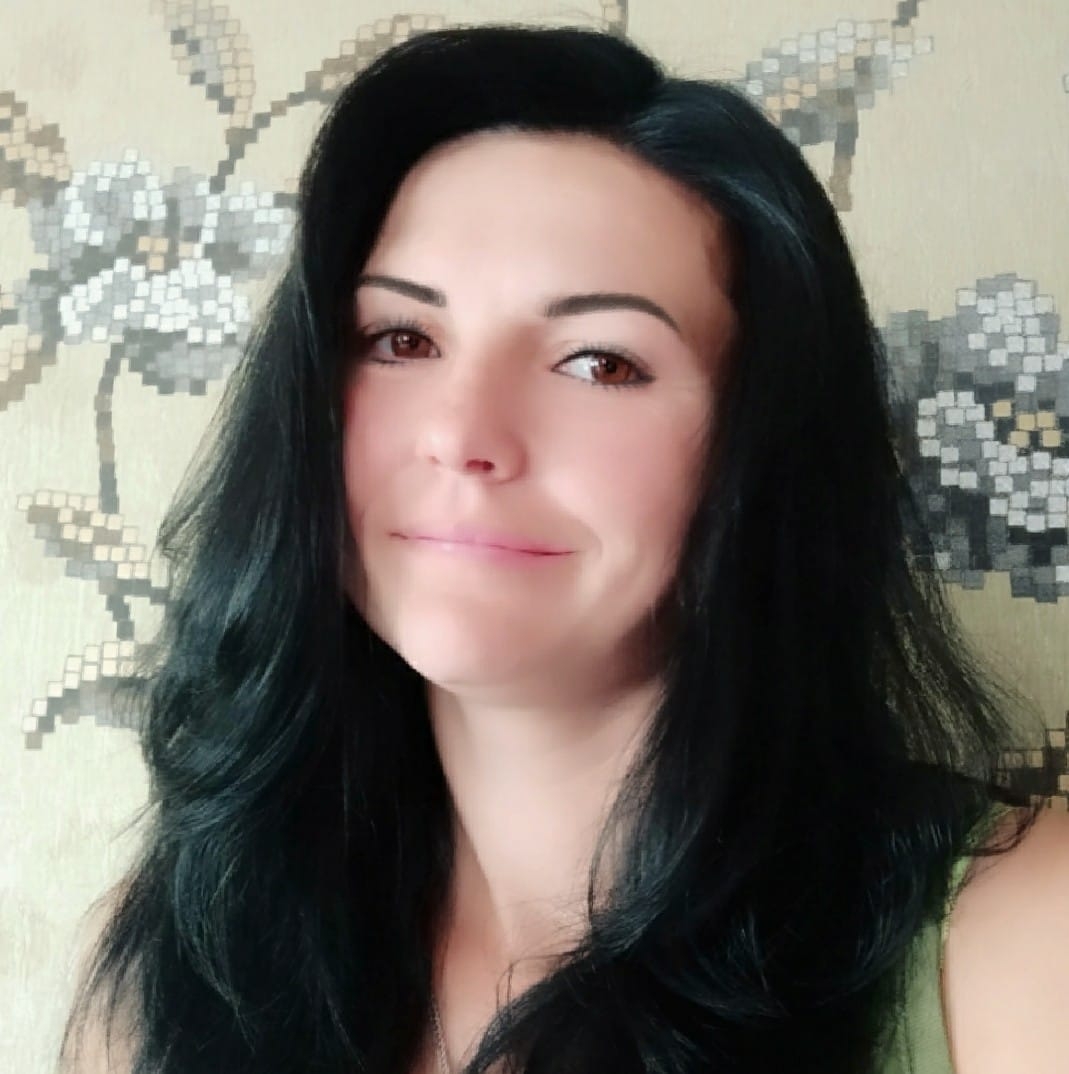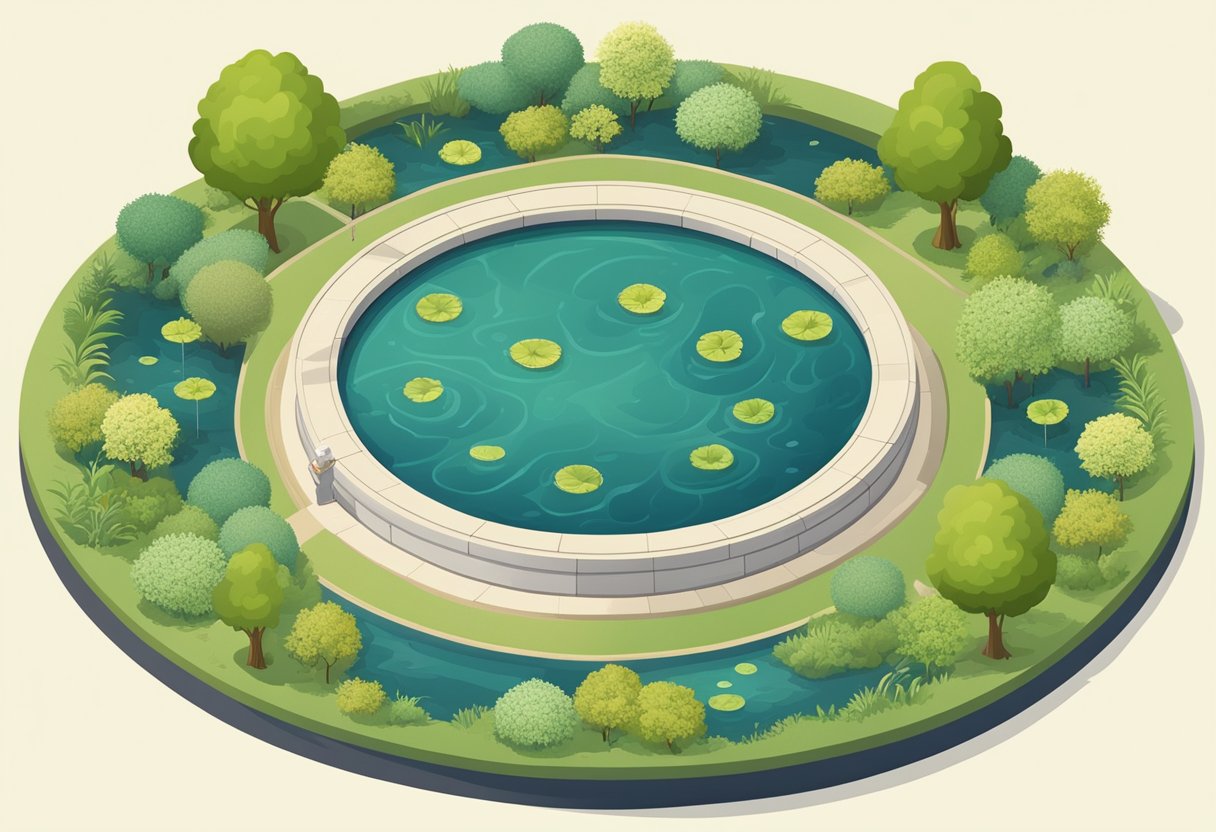Creating a DIY Koi fish pond is a great way to bring a touch of nature to your backyard. However, maintaining a balanced ecosystem in your pond can be challenging, especially if you’re new to the hobby. A balanced ecosystem is essential for the health and well-being of your Koi fish, as it helps to maintain the water quality and keep harmful bacteria at bay.
To create a balanced ecosystem in your DIY Koi fish pond, you’ll need to consider a range of factors, including the size of your pond, the number of fish you have, and the types of plants and other organisms that live in the pond. By taking a holistic approach to pond care, you can ensure that your fish thrive and your pond remains healthy and beautiful for years to come.
In this article, we’ll provide you with some helpful tips and advice on how to create a balanced ecosystem in your DIY Koi fish pond. We’ll cover everything from choosing the right plants and fish to maintaining the water quality and preventing common problems like algae blooms and oxygen depletion. Whether you’re a seasoned pond owner or a beginner, you’re sure to find some useful information in this guide.
Understanding Ecosystem Dynamics

Components of a Healthy Ecosystem
A balanced ecosystem in a DIY Koi fish pond requires several components to function properly. These components include a physical environment, biological organisms, and chemical processes. The physical environment includes water, rocks, plants, and other structures that provide shelter and food for the organisms in the pond. Biological organisms include fish, plants, bacteria, and other microorganisms that play a crucial role in the ecosystem. Chemical processes such as the nitrogen cycle, carbon cycle, and oxygen cycle are also important in maintaining a healthy ecosystem.
Role of Koi in the Pond Ecosystem
Koi fish play an important role in maintaining a balanced ecosystem in the pond. They help to control the population of other organisms such as algae and insects, and they also provide nutrients for the plants in the pond. Koi produce waste that contains nitrogen, which is converted into nitrates by beneficial bacteria in the pond. These nitrates are then absorbed by plants as a source of nutrition. In turn, the plants provide oxygen for the fish and help to maintain a healthy balance of nutrients in the pond.
To create a balanced ecosystem in a DIY Koi fish pond, it is important to understand the dynamics of the ecosystem and how each component interacts with the others. By providing a suitable physical environment, introducing the right biological organisms, and maintaining proper chemical processes, it is possible to create a thriving ecosystem that supports the health and well-being of the fish and other organisms in the pond.
Designing Your Koi Pond

Size and Depth Considerations
When designing your Koi pond, it is important to consider the size and depth of the pond. Koi fish require a certain amount of space to swim and grow, and the pond should be deep enough to provide adequate protection from predators and extreme temperatures.
A general rule of thumb is to have at least 1000 gallons of water for every three Koi fish. The pond should also be at least 3 feet deep to provide protection from predators and to prevent the water from freezing completely during the winter months.
Choosing the Right Location
Choosing the right location for your Koi pond is also crucial. The pond should be placed in an area that receives partial shade to prevent the water from overheating during the summer months. It should also be located away from trees and other vegetation to prevent debris from falling into the pond.
Additionally, the pond should be located away from any potential sources of pollution, such as septic tanks or chemical runoff from nearby roads. It is also important to ensure that the pond is easily accessible for maintenance and cleaning.
By taking these factors into consideration when designing your Koi pond, you can create a balanced ecosystem that will provide a healthy and thriving environment for your fish.
Water Quality Management
Maintaining the water quality is crucial for the health and well-being of the koi fish and other aquatic organisms in the pond. Here are some effective water quality management techniques to create a balanced ecosystem in your DIY koi fish pond.
Filtration Systems
Filtration systems are essential for keeping the pond water clean and clear. There are various types of filtration systems available, including mechanical, biological, and chemical filters. Mechanical filters remove debris and solid waste from the water, while biological filters use beneficial bacteria to break down harmful toxins and convert them into less harmful substances. Chemical filters are used to remove any excess chemicals or pollutants from the water.
Aeration Techniques
Aeration is another important aspect of water quality management. Aeration helps to increase the oxygen levels in the water, which is essential for the survival of aquatic organisms. There are different aeration techniques available, such as air pumps, waterfalls, fountains, and diffusers. These techniques help to circulate the water and prevent the formation of stagnant areas, which can lead to the growth of harmful bacteria.
Regular Water Testing
Regular water testing is necessary to ensure that the water quality is maintained at optimal levels. Testing the water for pH, ammonia, nitrite, and nitrate levels can help to identify any potential issues before they become a problem. It is recommended to test the water at least once a week, especially during the summer months when the water temperature is higher.
By implementing these water quality management techniques, you can create a balanced ecosystem in your DIY koi fish pond, providing a healthy environment for your fish and other aquatic organisms to thrive.
Plant Selection and Placement
When it comes to creating a balanced ecosystem in your DIY Koi fish pond, selecting and placing the right aquatic plants is crucial. Aquatic plants not only provide aesthetic appeal, but also help to oxygenate the water and control algae growth.
Aquatic Plants for Oxygenation
Plants such as water lilies, lotus, and hornwort are great options for oxygenating the water in your Koi pond. These plants release oxygen into the water during the day through photosynthesis, while also absorbing carbon dioxide and other harmful chemicals from the water.
It’s important to select plants that are appropriate for the size of your pond and the amount of sunlight it receives. Too many plants can cause oxygen levels to drop at night when photosynthesis is not occurring, leading to potential harm to your Koi.
Beneficial Bacteria and Algae Control
In addition to oxygenating the water, aquatic plants also help to control algae growth by competing for nutrients and shading the water. However, it’s important to supplement with beneficial bacteria to further control algae growth and maintain a healthy ecosystem.
Beneficial bacteria can be found in products such as pond clarifiers and treatments specifically designed for Koi ponds. These products help to break down organic matter and reduce nutrient levels in the water, ultimately leading to less algae growth and a cleaner pond.
When selecting and placing aquatic plants in your Koi pond, it’s important to consider their oxygenating and algae-controlling properties. By creating a balanced ecosystem with the right plants and beneficial bacteria, you can ensure a healthy and thriving environment for your Koi.
Fish Health and Population Control
Feeding Practices
One of the most important aspects of maintaining a healthy fish population in a DIY Koi fish pond is to ensure that the fish are receiving the proper nutrition. Overfeeding can lead to an overpopulation of fish, which can cause a number of problems including poor water quality and increased risk of disease. It is recommended to feed the fish small amounts of food several times a day, rather than one large feeding. This will also help to prevent uneaten food from accumulating at the bottom of the pond, which can also lead to poor water quality.
Disease Prevention
Disease can quickly spread throughout a fish population if proper precautions are not taken. Regularly monitoring the fish for signs of illness, such as changes in behavior or appearance, can help to catch any potential issues early on. It is also important to maintain good water quality, as poor water conditions can weaken the fish’s immune system and make them more susceptible to disease. Regularly testing the water and making necessary adjustments can help to ensure that the conditions in the pond are optimal for fish health.
Controlling Fish Population
Maintaining a balanced fish population is crucial for the overall health of the pond ecosystem. Overpopulation can lead to increased competition for resources, which can cause stress and lead to disease. One way to control the fish population is to limit the number of fish in the pond. Another option is to introduce natural predators, such as turtles or birds, to help control the population. It is important to research and choose a method that is appropriate for the specific pond and fish species.

As a dedicated veterinarian and animal enthusiast, I, Phoebe Wright, bring a unique perspective to my writing about Koi Fish. With my expertise in animal care, I strive to share valuable insights in a friendly and approachable manner, making my posts both informative and enjoyable to read.







